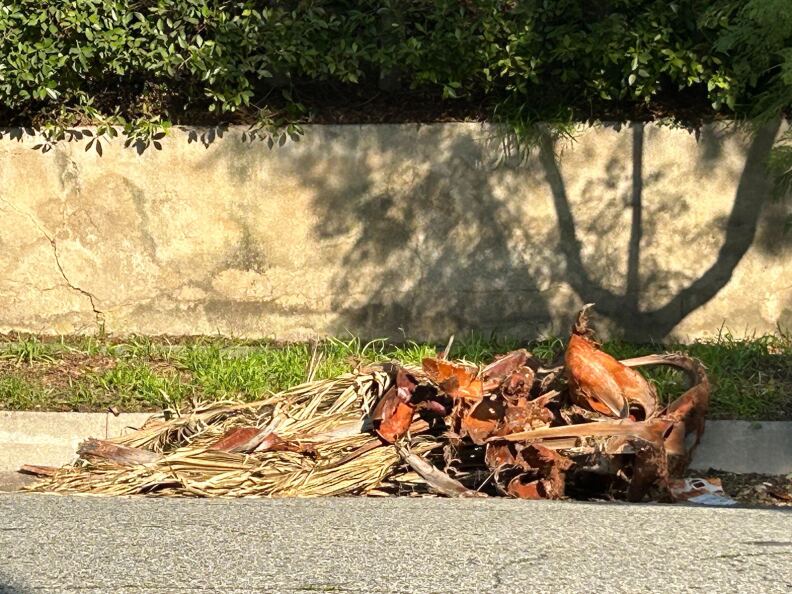Why LA’s Iconic Palm Trees Keep Shedding And How You Can Dispose Of Those Giant Fronds

Southern California’s palm trees are almost as iconic as our beautiful beaches and sprawling national parks, but their giant prickly fronds aren’t nearly as popular.
They litter streets, sidewalks, and yards, take up prime parking spots, and can even be dangerous.
Palm fronds are also tough and bulky, which makes them difficult to get rid of, and almost every city has different rules for how to handle them.
The messy mounds of foliage can be cleaned up, but dodging those pesky fronds after strong winds may just be a struggle of living in SoCal.
What are fronds, first of all?
Fronds are basically the leaves of the palm tree and come in many different shapes and sizes.
-
At magnitude 7.2, buildings collapsed
-
Now spinning in front of Santa Monica apartments
-
Advocates seek end to new LAUSD location policy
Their typical lifespan is roughly five years, according to A&P Nursery, and fronds brown with age until they fall off on their own, with human help, or with a strong gust of wind.
Now, getting rid of them once they’re off the trees is where things get tricky.
The coarse and fibrous fronds can take years to break down, which makes them challenging to compost. The city of Ventura called them the “plastic of plants.”
If you need to get rid of them
If the fronds have fallen all over your yard, roof, or private property — you’re on the hook for cleaning them up.
But you might not be able to just dump them in the green bin with your other clippings, depending on where you live.
A lot of waste facilities won’t accept palm fronds because they’re tough enough to get tangled in the machinery, and some cities, including Riverside, Chino, and Torrance, require residents to throw them away like trash.
Palm fronds DO NOT belong in your green waste container. Palm fronds are a coarse and wiry material, strong enough to get tangled in sorting and processing equipment. Please dispose of palm fronds in your black trash container. Visit https://t.co/fecEGVULHJ for info. pic.twitter.com/sLooBF4x5F
— City of West Covina (@WestCovinaCity) October 12, 2020
But if they’re blocking a street, sidewalk, or other public right of way, your city should be able to help. For example, in Los Angeles, you can report downed fronds to 311, and in Pasadena, you can submit an online service request here.
If you want to repurpose them
If you’re looking for a unique use for palm fronds, you might have to head out all the way to Coachella Valley for Palm Silage, Inc, a California-based company that turns them into livestock feed.

They’ve accepted palm waste from local landfills before, but there’s other options that are a bit closer to home.
They may make for lousy compost, but palm fronds can be turned into durable thatch roofs for gazebos, chicken coops, or garden sheds. They can also be used to block wind from young and fragile plants in your yard.
If you’re looking for a more artistic alternative, some have turned them into creepy (and cheap) Halloween masks, weaved them into baskets, and even carved them into wildlife figurines.
-
The state's parks department is working with stakeholders, including the military, to rebuild the San Onofre road, but no timeline has been given.
-
Built in 1951, the glass-walled chapel is one of L.A.’s few national historic landmarks. This isn’t the first time it has been damaged by landslides.
-
The climate crisis is destabilizing cliffs and making landslides more likely, an expert says.
-
Lifei Huang, 22, went missing near Mt. Baldy on Feb. 4 as the first of two atmospheric rivers was bearing down on the region.
-
Since 2021, volunteers have been planting Joshua tree seedlings in the Mojave Desert burn scar. The next session is slated for later this Spring, according to the National Park Service. Just like previous times, a few camels will be tagging along.
-
There are three main meteorological reasons why L.A. is so smoggy — all of which are affected when a rainstorm passes through and brings clearer skies.






